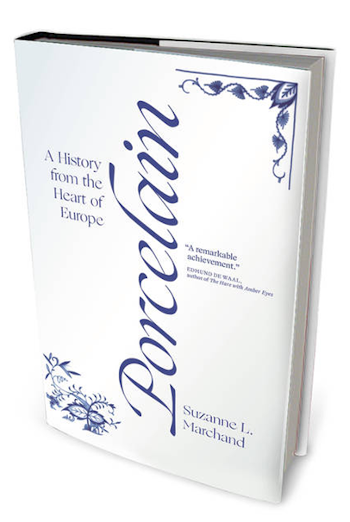
Charles R. Goulding considers the achievement of 3D printable porcelain.
Suzanne L. Marchand’s new book, “Porcelain: A History from the Heart of Europe,” is a unique look into European history through the unlikely subject matter of porcelain. By definition, porcelain is a white, vitrified, translucent ceramic originating in China. Dating back centuries, monarchs and nobles in Europe had experimenters employed to discover how to make porcelain as discovered in China. The formula that these alchemists were hired to discover was referred to as the Arcanum.
Once the right mix of clay, kaolin, and alabaster was determined, factories opened across Europe and porcelain pieces were being manufactured. Whether it was dinnerware, teacup sets, statuettes or other artwork, the delicate translucent ceramic (often with blue and white enamel beneath the glaze) was in steadfast demand.
Fast forward to today. Now, of course, people can visit a retail store or go online to satisfy their porcelain obsession. But that does not diminish the careful design and production required to achieve luxurious porcelain qualities. This is where 3D printing can come into the picture.
Porcelite, a 3D printable ceramic by Tethon3D and a 2016 Kickstarter, turns intricate designs into porcelain cups, plates, etc. that are cool to the touch due to the cellular nature of the surface. The smooth, translucent ceramic along with the delicate, intricate design patterns can be attributed to the ability of 3D printing to take an otherwise impossible design and turn it into a functioning unit.
It took designers and experimenters numerous iterations and rigorous experimentation to figure out how to properly 3D print the Porcelite material. Some challenges they faced included: small output or print volume, material shrinkage and/or separation during production, and other equipment setting issues (e.g., the Porcelite disabling a wiper during production). One of the most challenging issues was with the print falling off during 3D printing, both from build plate and supports. This was because Porcelite material is generally heavier and more brittle than other more frequently 3D printed materials.
Porcelite isn’t the only ceramic 3D printing material available, though others may still be difficult to find.
Activities associated with 3D printed porcelain design and/or development indicate research and development activity and may qualify for tax benefits.
The Research and Development Tax Credit
Whether it’s used for creating and testing prototypes or for final production, 3D printing is a great indicator that R&D Credit eligible activities are taking place. Companies implementing this technology at any point should consider taking advantage of R&D Tax Credits.
Enacted in 1981, the now permanent Federal Research and Development (R&D) Tax Credit allows a credit that typically ranges from 4%-7% of eligible spending for new and improved products and processes. Qualified research must meet the following four criteria:
- Must be technological in nature
- Must be a component of the taxpayer’s business
- Must represent R&D in the experimental sense and generally includes all such costs related to the development or improvement of a product or process
- Must eliminate uncertainty through a process of experimentation that considers one or more alternatives
Eligible costs include US employee wages, cost of supplies consumed in the R&D process, cost of pre-production testing, US contract research expenses, and certain costs associated with developing a patent.
On December 18, 2015, President Obama signed the PATH Act, making the R&D Tax Credit permanent. Beginning in 2016, the R&D credit has been used to offset Alternative Minimum Tax (AMT) for companies with revenue below $50MM and, startup businesses can obtain up to $250,000 per year in payroll tax cash rebates.
The Arcanum
Porcelain may not be the Arcanum for our zeitgeist. But that does not diminish its beauty or its place in our social events, dinner parties, and art exhibitions. Today, 3D printing can take complicated designs and produce porcelain dinner plates, teacups, etc., that would not be possible utilizing other means. Porcelain still catches the eye of the beholder and still holds a place in our pantry closets and our hearts.
